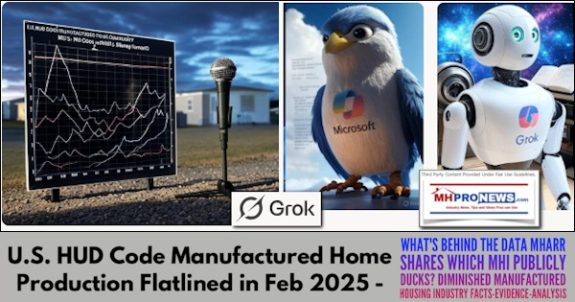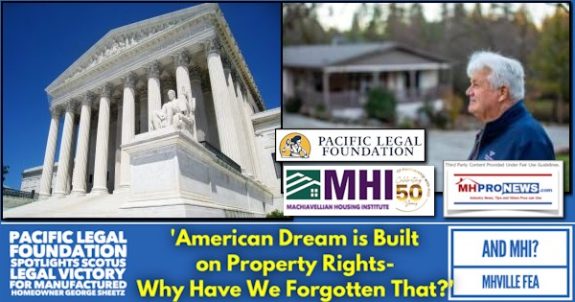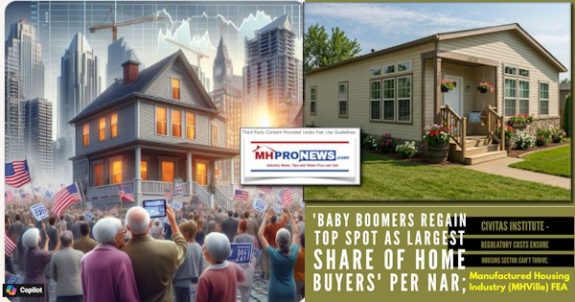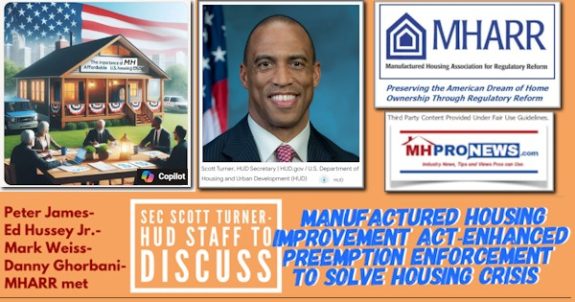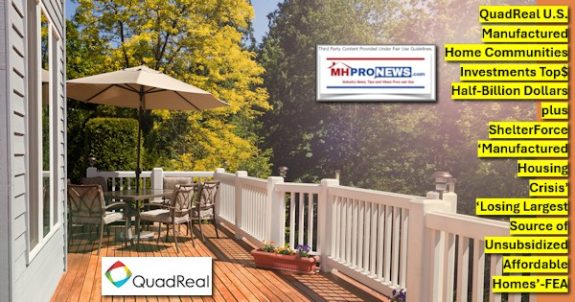MHI’s Dodd-Frank and Financial Services Policy Update
House Committee Leader Seeks to Delay CFPB Mortgage Regulations
Representative Shelley Moore Capito (R-WV), who serves as Chairman of the House Financial Services Subcommittee on Financial Institutions and Consumer Credit, is circulating a “Dear Colleague” letter urging the Consumer Financial Protection Bureau (CFPB) Director Richard Cordray to delay for a year the mortgage rules taking effect in January.
The new rules “present financial institutions with over 4,000 pages of new regulations that they must be in compliance with by January 2014,” the draft letter explains. “This task is especially difficult for community financial institutions that may only have one or two compliance officers… [W]e urge you to defer implementation of these rules until January 1, 2015 in order to ensure financial institutions are able to transition their systems to be in full compliance with the rules.”
The mortgage rules released in January combined with the amendments released in May, July, and September would be covered by the delay requested by Capito in the letter, including HOEPA High-Cost Mortgage Rules impacting manufactured home lending.
Speaking before the American Bankers Association Annual Convention, Cordray reiterated his past commitments to forestall any efforts that would delay implementation of the new mortgage rules that go into effect in January.Click here to view the comments.
The letter, which will be submitted to the CFPB the week of October 28th, can be viewed by clicking here.
CFPB Quick Reference Charts Posted
The Bureau has posted a series of reference charts that are designed to offer an easy way to visualize how new mortgage rules are likely to apply to certain products or transactions in a variety of circumstances. According to the CFPB, they “aren’t substitutes for the regulation text and official commentary, but they can give you an idea of where to start.” Reference guides include:
• Small creditor qualified mortgages flowchart
• Transaction coverage and exemptions for the 2013 mortgage origination rules
• Comparison of the general Ability-to-Repay requirements with the requirements for originating Qualified Mortgage loans
• Coverage of the Bureau’s 2013 mortgage servicing rules for loans and servicers.
To access the reference materials, click here.
FHA Develops Qualified Mortgage Guidelines
Earlier this month, the Department of Housing and Urban Development (HUD) announced that it had proposed new guidelines for mortgages insured by the Federal Housing Administration (FHA) that would automatically meet new Ability-to-Repay standards and shield lenders from future liability.
The Dodd–Frank Act required HUD to propose a Qualified Mortgage (QM) definition that is aligned with the Ability-to-Repay criteria set out in the Truth-in-Lending Act (TILA). HUD’s proposed definition builds off of the existing QM rule finalized by the Consumer Financial Protection Bureau (CFPB) earlier this year. In order to meet HUD’s QM definition, mortgage loans must:
• Require periodic payments;
• Have terms not to exceed 30 years;
• Limit upfront points and fees to no more than three percent with adjustments to facilitate smaller loans (except for Title I, Section 184 and Section 184A loans); and
• Be insured or guaranteed by FHA or HUD.
HUD proposes that Title I insured mortgages (manufactured housing and home improvement loans) and Section 184 mortgages (Indian Home Loan Guarantee Program) be covered by these guidelines. The proposed rule designates loans within these programs as Safe Harbor Qualified Mortgagesand does not require the three percent cap on upfront points/fees and Annual Percentage Rate (APR) to Average Prime Offer Rate (APOR) ratio, so as not to interfere with current lending practices until appropriate parameters can be determined.
The proposed rule establishes two categories of Qualified Mortgages that have different protective features for consumers and different legal consequences for lenders. HUD’s proposed Qualified Mortgage categories are determined by the relation of the APR of the loan to the APOR. The two categories of Qualified Mortgages are:
A Rebuttable Presumption Qualified Mortgage will have an APR greater than APOR + 115 basis points (bps) + on-going Mortgage Insurance Premium (MIP). Legally, lenders that offer these loans are presumed to have determined that the borrower met the Ability-to-Repay standard. Consumers can challenge that presumption by proving that they did not have sufficient income to pay the mortgage and their other living expenses.
Safe Harbor Qualified Mortgages will be loans with APRs equal to or less than APOR + 115bps + on-going MIP. Lenders originating these mortgages have the greatest legal certainty that they are complying with the Ability-to-Repay standard. Consumers can still legally challenge their lender if they believe the loan does not meet the definitions of a Safe Harbor Qualified Mortgage.
For more information, click here to visit the HUD Web site.
Agencies Issue Official Position on Qualified Mortgage and Fair Lending Compliance
In response to lender concerns that making only qualified mortgages would subject them to liabilities under the disparate impact doctrine of the Equal Credit Opportunity Act (ECOA), the CFPB, FDIC, NCUA, OCC and Federal Reserve Board issued a joint statement indicating that they “do not anticipate that a creditor’s decision to offer only Qualified Mortgages would, absent other factors, elevate a supervised institution’s fair lending risk.”
Click here for more information.
CFPB Issues Guidance and Interim Final Rule on Interacting with Troubled Borrowers
On October 15th, the CFPB issued compliance guidelines outlining how servicers should handle distressed borrowers when unexpected life events or other legal issues cloud the process. The guidance was issued at the request of the mortgage industry to provide assistance in complying with servicing guidelines related to: the death of a borrower; communication under the early intervention rule; and obligations related to the Fair Debt Collection Practices Act (FDCPA). To view the guidance, click here. Along with this, the CFPB issued an interim final rule further clarifying mortgage servicing guidelines related to these issues. To view the interim final rule, click here to visit the CFPB Web site.
CFPB to Stop Bringing Enforcement Lawyers to Exams
It was recently reported that effective November 1st, the CFPB will end its practice of having enforcement attorneys regularly participate in examinations of supervised entities. According to the report, Director Cordray announced the change on a conference call with CFPB examiners. The report indicated that a CFPB spokeswoman attributed the change to an internal review that aimed to improve the supervision process and found that having both examiners and enforcement attorneys present at exams was not efficient. For more information, click here.
Fannie and Freddie Formally Establish New Subsidiary
Earlier this month, Fannie Mae and Freddie Mac established a new subsidiary called Common Securitization Solutions (CSS) that will operate and design a system to handle the packaging and selling of new mortgage bonds.
In a released statement, the Federal Housing Finance Agency (FHFA) indicated that it had set a goal for building the company this year as a way to save taxpayers money from pricing irregularities that have surfaced between Fannie and Freddie. Once complete, the common securitization platform will allow both companies to consolidate how the loans they buy from lenders are packaged into bonds and sold to investors. The entity is also expected to serve as a market utility that private companies can use if Congress decides to abolish Fannie and Freddie. For more information, click here.
Report from the NCC Fall Leadership Forum: Building a Vision for the Future
With almost 200 attendees, the first NCC Fall Leadership Forum meeting was a resounding success. The attendees represented both large and small owners/operators in the manufactured home community business in addition to executives from home manufacturing, financing, brokerage and consulting firms. From Wednesday night’s opening cocktail reception to after the closing session on Friday, attendees were talking, networking and sharing ideas.
“The goal of the meeting was to provide thought-provoking content while offering substantive opportunity for networking,” said Jenny Hodge, NCC Vice President. “With speakers from both inside and outside the industry, we wanted to offer new perspective,” she added.
Thursday morning’s featured speaker was Gerry O’Brion of What Big Brands Know. His presentation offered the audience a six question approach to understanding their business and finding a way to differentiate. The panel discussion of “Tackling the Obvious” targeted issues of community owners working with manufacturers to find ways to create a positive home buyer experience. Tom Derzypolski of BowStern Marketing Communications advised the audience that “fear of complaints” is no reason to avoid social media and that results from social media efforts can be measured.
MHI Chairman Nathan Smith conducted an interview with iconic investor Sam Zell. Mr. Zell offered his views on the economy and stated his opinion that “low interest rates are addictive.” When asked to share some of his best life lessons, he offered his view that “it’s okay to challenge conventional wisdom and be contrarian.” Finally, Mr. Zell also expressed confidence in the fundamentals of the land lease business model.
Troy Rierson, National Director of Zillow, shared that Zillow currently has about 38,000 manufactured homes listed on its site. As the largest national database for real estate, Zillow has information on approximately 150 million different properties. He further pointed out that basic listings on Zillow are free and that for-sale manufactured homes on either owned or leased land are eligible for listing on Zillow.
Randall K. Rowe, Chairman of Green Courte Partners, LLC, moderated the final panel of the conference on “The Future of the Land Lease Business Model” which generated dialogue about all of the topics addressed during the meeting. Questions regarding image, marketing, affordability and customer service were discussed. There was lively debate among the panelists as to whether or not a national image campaign should be considered.
The 2014 NCC Fall Leadership Forum will be returning to Chicago during theweek of October 27th in 2014, however, the hotel selection process is not yet finalized.
RV/MH Hall of Fame Nominations Due by October 31st
The RV/MH Hall of Fame Selection Committee has issued a call for nominations for the Class of 2014.
Darryl Searer, Hall president, said, “The Hall welcomes nominations from all RV and manufactured housing sectors – manufacturers, dealers, campgrounds, housing communities, suppliers, user groups, trade media, associations, etc. – for the class of 2014 and beyond.”
The RV/MH Heritage Foundation board of directors recently approved a new and improved process for nominating. Click here to access nomination guidelines and forms available online.
According to the new guidelines, anyone can nominate a person to the Hall of Fame that meets the eligibility requirements. The only people who may not be considered are those who currently serve on the Hall’s Selection Committee.
To be eligible the nominee must be, or have been, an active participant in any segment of the recreation vehicle or manufactured housing industries for a minimum of 25 years. Also, the nomination form must be filled out in its entirety and must be accompanied by three supporting letters (no more, no less) that meet the Hall’s guidelines for these letters.
The Hall’s Selection Committee will announce its selections in January and those chosen will be inducted at the Hall’s annual Induction dinner in August. The Hall’s bylaws allow for up to 10 inductees per year.
Searer said, “The Selection Committee is made up of an equal number of members of the RV and manufactured housing industries, and members will only vote on nominees from their respective industries.”
Once the nomination form and supporting letters have been completed, the nominations may be submitted by mail, in person at the Hall, or by fax at 574-293-3466.
Enter the 2014 Land-Lease Community and Retail Sales Center of the Year and Manufactured and Modular Home Design Awards throughMHI’s Online Awards System
Click here to enter or view information on the 2014 Land-Lease Community and Retail Sales Center of the Year and Manufactured and Modular Home Design Awards. Through the online system, you can enter the National Industry Awards competition, find eligibility information and submission requirements, view the contest rules, pay entry fees, and upload all of your entry files for judging online. The deadline for submitting entries, paying the fees and submitting materials online for judging is March 12, 2014.
The National Industry Awards are presented each year at the National Congress & Expo for Manufactured and Modular Housing, bringing recognition to the best manufactured home communities and manufactured home retail sales centers in the country and the industry leaders in new manufactured and modular
home designs. This year, the Congress & Expo will be held April 29 – May 1, 2014 at Caesars Palace in Las Vegas. Click here for information on the 2014 Congress & Expo. Awards will be presented on Wednesday, April 30th. Each award winner receives a personalized trophy and the entry will be placed inMHI’s online Photo Gallery. Click here to view.
Please note the following membership requirements for entering the competition:
– Manufacturers that enter the Manufactured and Modular Home Design Awards competition must be a member of the Manufactured Housing Institute (MHI).
– Retailers that enter the Retail Sales Center of the Year Award competition must be a member of the state association in the state where the sales center is located.
– Communities that enter the Land-Lease Community of the Year Award competition must be a member of the state association in the state where the community is located.






















